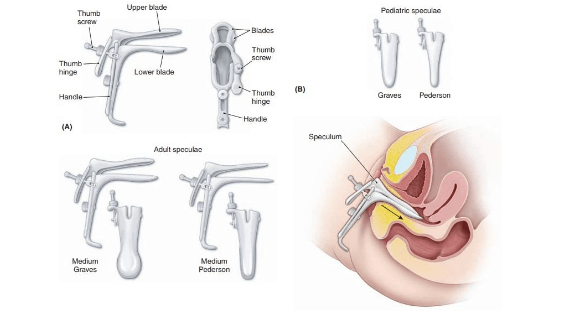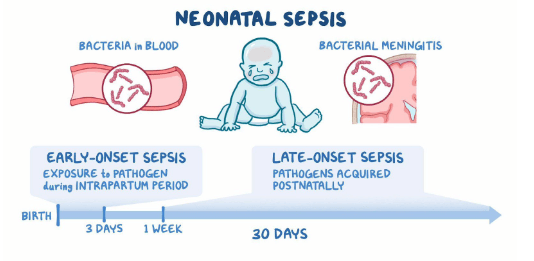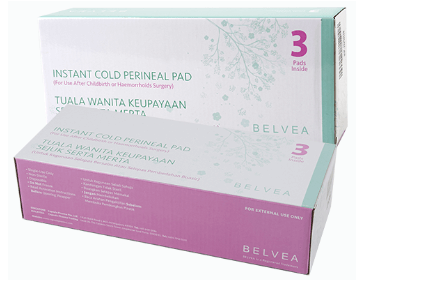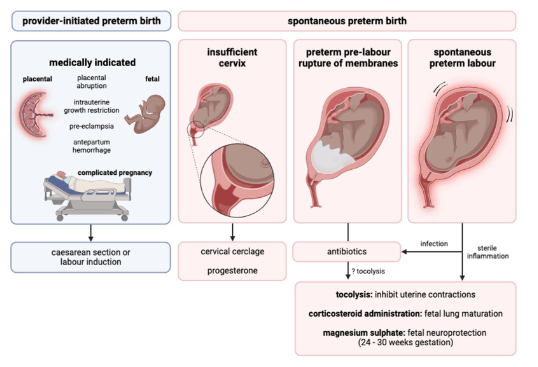Nursing Interventions and Management
- The main goals of nursing care for clients with PROM and PPROM are to prevent infection, monitor maternal and fetal status, promote fetal lung maturity, and prepare for delivery if indicated
-
Some of the nursing interventions and management strategies include:
- Perform a sterile speculum examination to confirm membrane rupture and assess for pooling of amniotic fluid in the vagina. Avoid digital vaginal examinations unless absolutely necessary to reduce the risk of introducing infection

- Obtain vaginal and rectal cultures as prescribed to test for group B streptococcus, which can cause neonatal sepsis if transmitted during delivery. Administer antibiotics as prescribed to prevent or treat infection

-
Monitor maternal vital signs, especially temperature, every 4 hours or more frequently if indicated. Report any signs of infection, such as fever, tachycardia, leukocytosis, or foul-smelling discharge
-
Monitor fetal heart rate and uterine activity continuously or intermittently depending on gestational age and maternal condition. Report any signs of fetal distress, such as tachycardia, bradycardia, decelerations, or reduced variability .
-
Measure the amount and color of amniotic fluid leakage using a perineal pad. Report any changes in color or odor that may indicate infection or meconium staining (presence of fetal stool in amniotic fluid)
-

-
Administer corticosteroids as prescribed to enhance fetal lung maturity if gestational age is less than 34 weeks. Corticosteroids can reduce the risk of respiratory distress syndrome, intraventricular hemorrhage, necrotizing enterocolitis, and neonatal death in preterm infants
-
Administer tocolytics as prescribed to inhibit uterine contractions if gestational age is less than 34 weeks and there are no contraindications. Tocolytics can prolong pregnancy for up to 48 hours to allow time for corticosteroids to take effect or for maternal transfer to a facility with neonatal intensive care unit (NICU)
-

-
Maintain bed rest with bathroom privileges if there are no signs of labor or infection. Bed rest may reduce pressure on the cervix and prevent cord prolapse if there is significant loss of amniotic fluid. Encourage ambulation once labor begins or if fetal head is engaged
-
Provide comfort measures such as changing perineal pads frequently, applying ice packs to perineum if needed, wearing loose clothing, drinking plenty of fluids, and avoiding sexual intercourse or douching. These measures can help reduce irritation, discomfort, odor, dehydration, and infection risk
-
Educate the client and family about PROM and PPROM and their treatments. Explain the purpose and possible side effects of medications such as antibiotics, corticosteroids, and tocolytics. Teach them how to monitor for signs of infection, labor, cord prolapse, or fetal distress at home. Instruct them to report any changes in amniotic fluid leakage, vaginal bleeding, abdominal pain, fever, contractions, fetal movements, or umbilical cord protrusion immediately. Provide written instructions and contact numbers for emergency situations
-
Provide emotional support and reassurance to the client and family. Acknowledge their fears and concerns about preterm delivery, fetal well-being, NICU admission, or possible complications. Encourage them to express their feelings and ask questions. Provide information about available resources such as social workers, counselors, support groups, or online forums. Help them cope with uncertainty and plan for possible outcomes
-
Chorioamnionitis: An infection of the amniotic sac and fluid that can cause maternal fever, tachycardia, uterine tenderness, foul-smelling discharge, and leukocytosis. Chorioamnionitis can also increase the risk of postpartum endometritis, sepsis, hemorrhage, or thromboembolism
-
Placental abruption: A premature separation of the placenta from the uterine wall that can cause maternal bleeding, abdominal pain, uterine rigidity, and fetal distress. Placental abruption can also increase the risk of postpartum hemorrhage, anemia, shock, or disseminated intravascular coagulation (DIC)
Nursing Test Bank
Naxlex Comprehensive Predictor Exams
Questions on Nursing Interventions and Management
Correct Answer is ["A","B","C"]
Explanation
Correct Answer is C
Explanation
Correct Answer is A
Explanation
Search Here
Related Topics
More on Nursing
- Newborn Complications
- Physiological And Physical Changes In Pregnancy
- Prenatal Diagnostic Tests And Procedures
- Pre-eclampsia, Eclampsia
- Pre-term Labor
- Contraception
- Prolonged and Obstructed Labor and Ruptured Uterus
- Phases of Maternal Role Attainment
- Postpartum Depression
- Postpartum Disorders: DVT, Pulmonary Embolism
Free Nursing Study Materials
Access to all study guides and practice questions for nursing for free.
- Free Nursing Study Trials
- Free Nursing Video tutorials
- Free Nursing Practice Tests
- Free Exam and Study Modes
- Free Nursing Revision Quizlets
